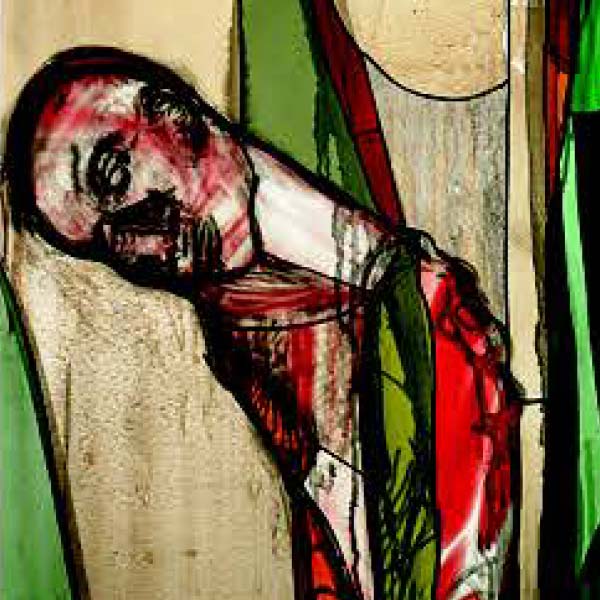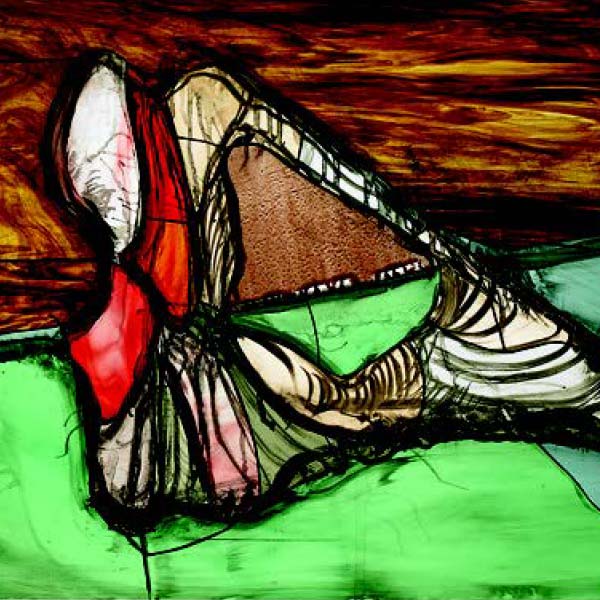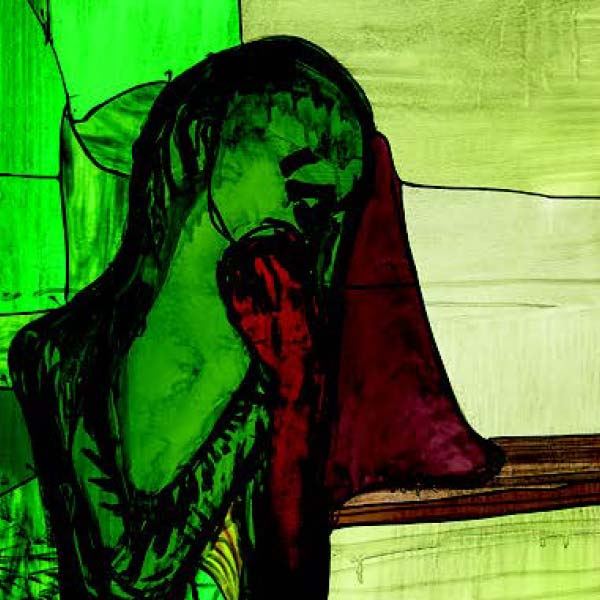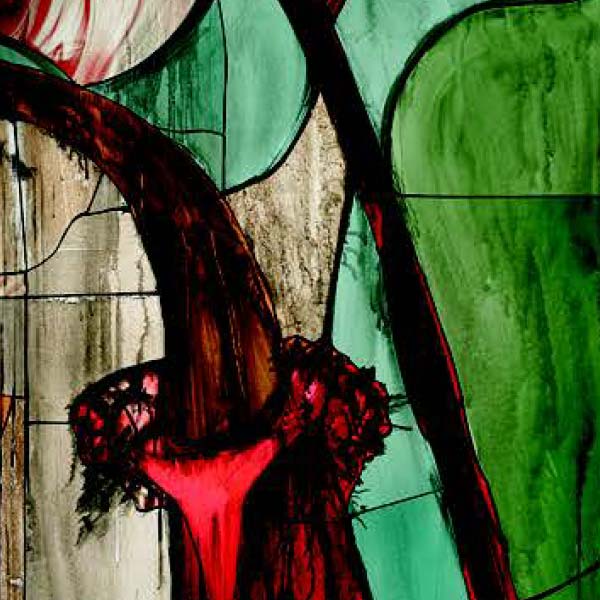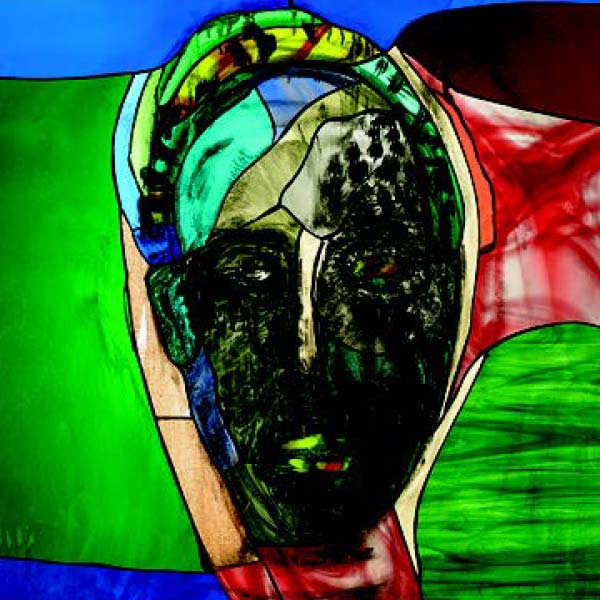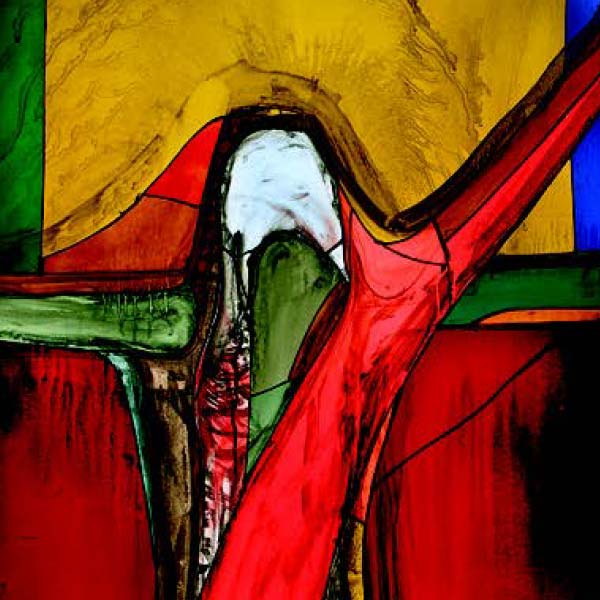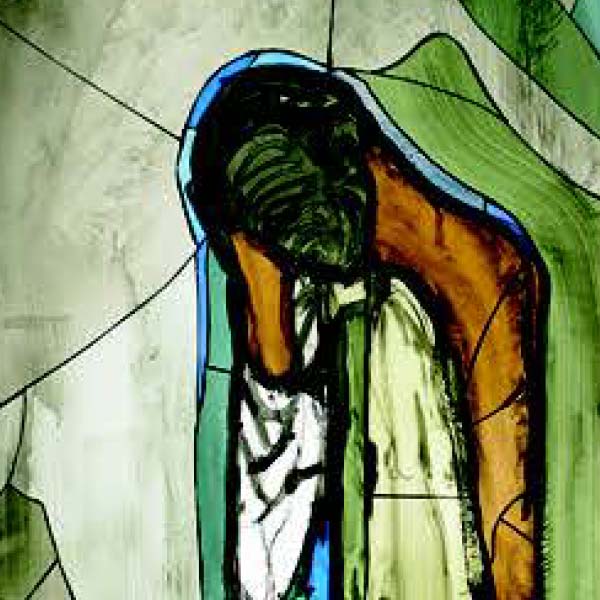Section 3
Southern Wing
The southern wing of the chapel contains three different groupings of stained-glass, depicting the stories of Cain and Abel, the Crucifixion of Christ and the institution of the Lord’s Supper.
Cain and Abel
Closest to the left of the stage you will find a series of three windows depicting the story of Cain and Abel (Genesis 4:8-11). The artwork on the door shows Cain after he strikes his brother Abel. His hands are covering his mouth — almost like a child ashamed or in shock as he realizes what he has done. The pane to the left of the door illustrates Cain’s expression of confusion, doubt and sorrow, with the carcass of the sacrificial lamb hanging over his shoulder. Above the door, you will see a window depicting the skull of an animal, Brandes’ representation of the weapon Cain used to kill Abel.
The Eucharist
This pane, which finds its counterpart depicting Jesus’ baptism in the northern wing of the chapel, draws its inspiration from the institution of the Lord’s Supper (Matthew 26:26-30). The red window is a vision of what took place at Calvary. The imagery found here shows a crown of thorns, a huge wound and an altar cup that receives Christ’s blood, which has already become wine.
The Crucifixion of Christ
The three panes shown here collectively depict the Crucifixion of Christ (Matthew 27:45-50). Facing the windows with the Cain and Abel motifs, which depict the first murder recorded in the Bible, we see another murder — namely, the Romans’ execution of Christ. The artwork on the door depicts Christ, his face looking upward. One arm is raised both in a cry and in triumph. This represents Christ as our spokesman, chosen by God to be the ultimate sacrificial victim. A victim for the sake of reconciliation. Christ thus does not look down to see his mother Mary or his favorite disciple John, as is common in the history of art.
To the right, you will observe a pane that shows John the disciple (top panel) and Mary, the mother of Jesus (bottom panel). John is portrayed as Adam, along with Adam’s apple and skull at his feet. In keeping with the symbolism, Mary is portrayed as Eve, with the tree trunk of the garden of Eden included in her pane. The window above the door depicts Christ looking down upon us — he is present to the believer.
 Biola University
Biola University